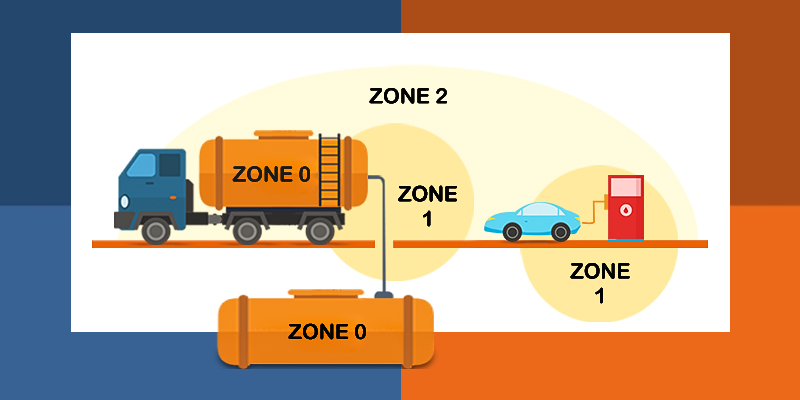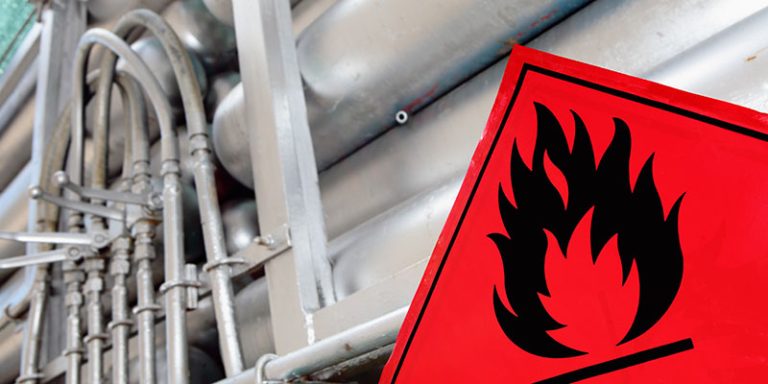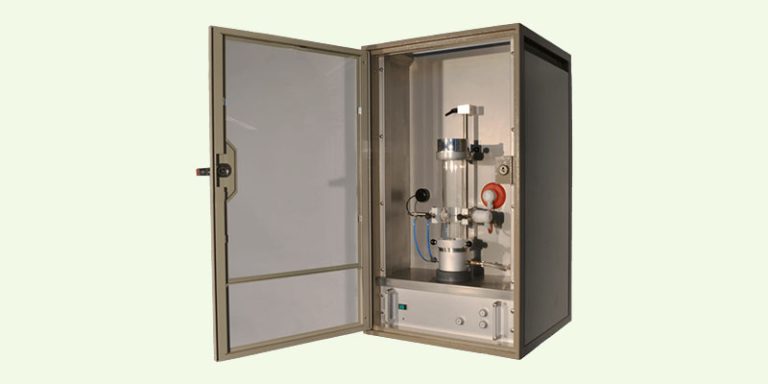In the world of hazardous locations, safety is of utmost importance. To categorize and manage potential risks, the hazardous area classification system divides these locations into different zones, depending on the presence of flammable or combustible substances. The three most commonly referred zones are Zone 0, Zone 1, and Zone 2, which provide a basis for proper selection of equipment and implementation of safety measures.
Zone 0 is an area where explosive gases or vapors are continuously present or expected to be present for long periods. Recognizing the ever-present threat in such environments, it becomes crucial to utilize specially designed equipment to prevent disastrous outcomes. In comparison, Zone 1 areas have a lower potential risk, characterized by the occasional presence of explosive substances during normal operations. Equipment used within this zone must also adhere to specific guidelines to ensure a controlled and safe environment.
On the other hand, Zone 2 represents areas where flammable gases or vapors are infrequently present and only under abnormal conditions. Although the risk is comparatively lower in this zone, diligent attention to equipment standards and safety protocols is still imperative. The understanding and proper application of these zone classifications enable industries to maintain secure working conditions while minimizing the potential for accidents and ensuring overall operational efficiency.
Hazardous Zone Definitions
Zone 0
Zone 0 is defined as an area where an explosive gas atmosphere is present continuously or for long periods of time. This implies that, in normal operation, a hazardous mixture is continuously present in the form of gas, vapor, or mist. This type of zone is the most dangerous and requires the strictest level of protection. Equipment used in Zone 0 must be specially designed and certified to ensure it does not ignite an explosive atmosphere.
- Duration: Continuously or long periods
- Risk Level: Highest
- Protection: Strictest measures and equipment certification
Zone 1
Zone 1 refers to areas where an explosive gas atmosphere is likely to occur periodically during normal operation. This means that, although the hazard is not continuously present, there is still a high likelihood of encountering an explosive atmosphere during certain processes or activities. To mitigate potential risks, precautions are required in selecting and installing equipment in Zone 1 areas.
- Duration: Periodically during normal operation
- Risk Level: High
- Protection: Precautions in equipment selection and installation
Zone 2
Zone 2 is identified as an area where an explosive gas atmosphere is not likely to occur during normal operation, but if it does, it will persist for a short period only. This signifies a lower risk compared to Zones 0 and 1 but still requires appropriate safety measures. Equipment used in Zone 2 should be certified to ensure it can safely operate under these conditions.
- Duration: Not likely, but if occurring, only for short periods
- Risk Level: Lowest among hazardous zones
- Protection: Equipment certification and safety measures
Hazardous Area Classification Factors
Frequency of Occurrence
When classifying hazardous areas, one key factor to consider is the frequency of occurrence of the hazardous material. This refers to how often a flammable or explosive substance is present in the atmosphere, which can range from continuously (Zone 0) to intermittently (Zone 1) and rarely (Zone 2). Determining the frequency of occurrence helps in assessing the risks involved in these zones and implementing safety measures accordingly.
- Zone 0: Substances are present continuously or for long periods of time.
- Zone 1: Substances are likely present under normal operating conditions, but not continuously.
- Zone 2: Substances are not likely present under normal operating conditions and, if they are, it is for a short duration.
Duration of Occurrence
Another important factor in hazardous area classification is the duration of occurrence of the hazardous material. This refers to the length of time the hazardous substance is present in the atmosphere when an event takes place. Longer durations increase the risk of ignition and explosion, while shorter durations decrease the risk. The following general guidelines provide a starting point for understanding duration of occurrence in different zones:
- Zone 0: Substances are present continuously or for more than 1000 hours per year.
- Zone 1: Substances are present between 10 to 1000 hours per year.
- Zone 2: Substances are present for less than 10 hours per year.
Size of Hazardous Area
The size of the hazardous area, or the spatial extent of the zone, is another critical factor to take into account when classifying the zones. A larger hazardous area presents a higher risk due to the increased probability of ignition sources being present and the broader impact that an incident may have. When determining the size of a hazardous area, it’s essential to consider both the dimensions of the area in which the hazardous materials may be present and the potential consequences of an igniting event. This can help determine the appropriate boundaries for each zone and establish safety measures specific to the dimensions and risks involved.
Zone Classification Applications
Gas and Vapor Environments
In gas and vapor environments, hazardous zones are classified based on the frequency and duration of expected hazardous occurrences. This classification is used to determine appropriate equipment, protect workers, and ensure safety measures are in place. The zones are broadly divided into three categories:
- Zone 0: This zone refers to areas where explosive gas or vapor is continuously present for extended periods (more than 1000 hours per year). These areas require specialized equipment designed for continuous operation in such environments.
- Zone 1: This classification is for areas where explosive gas or vapor is likely to occur during normal operations (10-1000 hours per year). Equipment used in these areas must be certified for operation in Zone 1 environments and designed to prevent ignition of the surrounding atmosphere.
- Zone 2: This zone is for areas where explosive gas or vapor is not expected during normal operations but may occur due to infrequent leaks or releases (less than 10 hours per year). Equipment used in this zone must be certified for Zone 2 operation and designed to prevent the ignition of an explosive atmosphere in case of an accidental release.
Dust Environments
In dust environments, hazardous zones are classified based on the presence of combustible dusts or fibers, which can ignite or explode. Similar to gas and vapor environments, these zones are classified into three categories:
- Zone 20: These areas are characterized by the continuous presence of combustible dust or materials for extended periods (more than 1000 hours per year). Equipment used in these zones must be designed and certified for continuous operation in a Zone 20 environment.
- Zone 21: In this classification, combustible dusts or fibers are likely to be present during normal operations (10-1000 hours per year). Equipment used in Zone 21 areas must be certified for use in these environments and designed with safeguards to prevent the ignition of combustible dusts or fibers.
- Zone 22: This zone is for areas where combustible dusts or fibers are not expected during normal operations but may be present due to infrequent releases (less than 10 hours per year). Equipment used in Zone 22 must be designed and certified for this environment, ensuring the prevention of combustible dust ignition in case of an accidental release.
Hazardous Zone Safety Guidelines
Equipment and Material Selection
When working in hazardous zones, it is critical to select the appropriate equipment and materials for use in these areas. Equipment must meet the stringent safety requirements set by regulatory agencies. Consider the following:
- Intrinsically safe equipment: Ensure that the equipment in use is intrinsically safe and certified for the specific zone it will be operating in, e.g., Zone 0, Zone 1, or Zone 2.
- Proper documentation: Verify that the equipment is certified by an accredited agency and includes documentation attesting to its conformity with applicable standards.
- Materials compatibility: Choose materials that are resistant to the various substances present in the hazardous zone, such as chemicals, gases, or vapors.
Inspection and Maintenance
Regular inspection and maintenance are essential to maintaining safety in hazardous zones. Implement a routine inspection schedule to ensure that all equipment is functioning correctly and remains in compliance with safety requirements. Here are some key points to consider:
- Regular inspections: Conduct periodic inspections of all equipment, including visual checks, electrical tests, and mechanical integrity assessments, to ensure it is in proper working order.
- Preventative maintenance: Schedule routine maintenance, such as cleaning, lubrication, and replacement of worn parts, to prevent equipment failures that could lead to hazardous incidents.
- Prompt repairs: Address any identified issues promptly, and if necessary, remove faulty equipment from service until repairs are completed.
By adhering to these safety guidelines in hazardous zones, you can minimize the risk of incidents, protect personnel, and maintain operational efficiency.
Explosion-Proof Equipment and Standards
When working in hazardous environments, the use of explosion-proof equipment and adherence to international standards are crucial for ensuring the safety of personnel and facilities. Different zones, such as Zone 0, Zone 1, and Zone 2, require specific equipment and standards based on the likelihood of an explosive atmosphere. This section highlights two important regulations: the ATEX Directive and the IECEx System.
ATEX Directive
The ATEX Directive (ATmosphères EXplosibles) comprises two European Union directives outlining the minimum safety requirements for equipment and protective systems intended to be used in potentially explosive atmospheres. These include:
- Directive 2014/34/EU (ATEX 114): This directive covers equipment and protective systems for use in potentially explosive atmospheres. It categorizes equipment into groups and categories, with specific requirements based on the intended zone of operation. Manufacturers must adhere to these requirements to receive the ATEX certification.
- Directive 1999/92/EC (ATEX 153): This directive lays down the minimum requirements for improving the health and safety of workers potentially at risk from explosive atmospheres. It requires employers to classify hazardous areas into zones and implement appropriate measures to prevent the formation of, or eliminate, these hazards.
Compliance with the ATEX directive ensures that equipment and protective systems are suitable for use in the designated zones, reducing the risk of explosions and accidents.
IECEx System
The International Electrotechnical Commission System for Certification to Standards Relating to Equipment for Use in Explosive Atmospheres (IECEx System) is a global certification scheme covering products, services, and personnel involved in explosive atmospheres. The IECEx System aims to harmonize international safety standards, reduce testing and certification time, and facilitate the international exchange of goods and equipment. It comprises the following elements:
- IECEx Certified Equipment Scheme (CoPC): This scheme certifies equipment as per the IEC standards for electrical equipment used in explosive atmospheres (IEC 60079 series). Equipment is tested and certified by IECEx Certification Bodies (ExCBs).
- IECEx Certified Service Facilities Scheme: This scheme certifies organizations that repair, overhaul, and conduct other processes on Ex equipment, ensuring these services meet the IECEx standards.
- IECEx Scheme for Certification of Personnel Competence (CoPC): This scheme certifies individuals working with equipment in explosive atmospheres, demonstrating their competence based on defined roles and responsibilities.
Adherence to the IECEx System supports the implementation of best practices and facilitates global recognition of equipment and services catering to explosive atmospheres. It helps reduce the risk of accidents and enhances overall safety in hazardous zones.
Real-World Examples
Chemical Processing Plants
In chemical processing plants, hazardous substances are often present in various stages of manufacturing. Zone 0, Zone 1, and Zone 2 classifications are crucial in these facilities to ensure safety and prevent accidents. Zone 0 areas, for example, are typically found near volatile storage tanks, where a constant risk of explosive gas atmosphere exists. On the other hand, Zone 1 areas might be present within the plant where flammable vapors or gases are intermittently released during normal operations.
Zone 2 areas are generally found around the plant’s boundary or in areas where hazardous substances are less likely to be present. In these zones, the risk of explosion is low but still possible. To maintain safety and compliance in these areas, appropriate equipment and procedures must be employed.
- Zone 0: Storage tanks for volatile substances
- Zone 1: Manufacturing areas with intermittent release of flammable vapors
- Zone 2: Boundary and low-risk areas
Oil and Gas Industry
The oil and gas industry also relies on the hazardous zone classification system to ensure safety in their operations. Facilities such as refineries, drilling platforms, and processing plants deal with flammable substances on a regular basis, making the implementation of proper safety measures a priority.
In this industry, Zone 0 areas can be found in locations with a consistent presence of explosive gases, such as in enclosed storage tanks. Zone 1 locations might include processing areas where the release of flammable gases is part of normal operations, while Zone 2 areas are those where the risk of explosion is present, but for a shorter duration and lower probability.
- Zone 0: Enclosed storage tanks containing explosive gases
- Zone 1: Processing areas with normal release of flammable gases
- Zone 2: Areas with occasional release of explosive substances
Frequently Asked Questions
What are the key differences between Zone 0, Zone 1, and Zone 2?
Zone 0 is the most hazardous, with an explosive atmosphere present continuously or for long periods. Zone 1 is considered hazardous with an explosive atmosphere occuring occasionally during normal operation. Zone 2 has the lowest risk, where an explosive atmosphere is rare and only during abnormal conditions for a short period.
Can you provide examples of each type of hazardous zone?
Zone 0 examples include tanks storing flammable liquids or gas. Zone 1 areas might include pumping stations, where leaks could lead to explosive atmospheres temporarily. Zone 2 could include areas near Zone 1, like warehouses storing sealed containers of chemicals, where a leak might cause a brief hazard.
How are hazardous areas classified?
Hazardous areas are classified by the likelihood of explosive atmospheres, considering three factors: presence of flammable substances, ignition sources, and atmospheric conditions like oxygen concentration. Regulatory authorities and standards, like National Electrical Code (NEC) and International Electrotechnical Commission (IEC), provide guidelines for this classification.
What factors determine the classification of a hazardous zone?
Several factors are considered when classifying hazardous zones, including the types of flammable materials, the physical state of materials (gas, vapor, dust, etc.), the operating conditions, and the potential for leakage or machinery malfunction creating an explosive atmosphere.
What precautions should be taken in each specific zone?
In Zone 0, equipment must be designed to prevent ignition, and only Zone 0 certified devices should be used. For Zone 1, devices should comply with the appropriate safety standards and receive regular maintenance. Extra precautions should be taken to avoid ignition sources. In Zone 2, hazard control measures include safe storage of flammable materials, monitoring systems, and proper ventilation to prevent accumulation of explosive gases or dust.
How does lighting differ between Zone 1 and Zone 2?
Lighting in Zone 1 requires strict restrictions and compliances with guidelines like the ATEX directive or the IEC. Light fixtures must be specifically certified for use in Zone 1 to ensure they will not ignite an explosive atmosphere. In Zone 2, lighting requirements are less stringent. However, devices should still be selected based on relevant standards and approved for use in Zone 2 environments.




